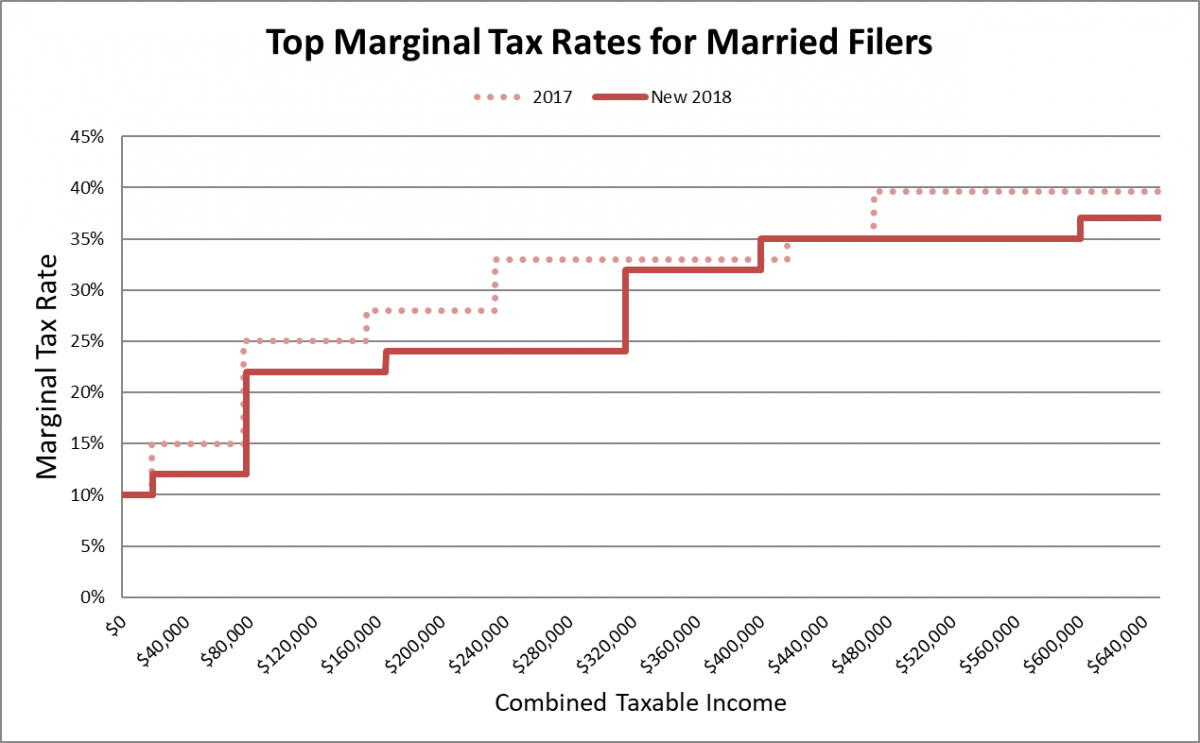With the recent passage of the Tax Cuts and Jobs Act (TCJA), many believe we are witnessing the largest tax reform in over 30 years. 2018 changes to rules on tax thresholds, deductions, credits, exclusions, and exemptions along with many other areas will all take effect for taxpayers filing their taxes next year. Changes to the marginal tax rates are no exception. Marginal tax rates are a large part of an individual’s tax situation because, by definition, they determine the percentage an individual pays for every additional dollar of taxable income. We recently put together two charts that we think best illustrate these significant changes.

Source: IRS.gov 2017, 2018 tax brackets, Financial Sense® Wealth Management
As you can see in the chart above, most married filers will likely see their top marginal rate decrease from last year. Further, married filers with taxable earnings in the range of 0k to 0k should expect to see the largest decrease in their top marginal tax rate; a decrease of approximately 8% from last year.

Source: IRS.gov 2017, 2018 tax brackets, Financial Sense® Wealth Management
Looking at a similar chart above, many single filers are also positioned to see their top marginal tax rates decrease from last year. Single taxpayers with taxable income in the range of 0k to 7k as well as high-income earners making between 0k and 9k should see the largest decrease to their top marginal tax rate; approximately 4% relative to their taxable income. However, it is imperative to note that both graphs above showing lower marginal tax rates for future tax years do not necessarily equate to more tax savings in 2019. Marginal tax rates are an important component to one’s tax situation, however, they are only relevant for CPAs and another financial professionals when calculating tax liability after taking into account other tax implications like existing rules for itemized deductions and exemptions, which have also been altered as a result of the recent tax reform.
For further insight in to what these recent changes mean and how they may impact you, check out our recent study Understanding Changes to the US Marginal Tax Rates.
Disclosures: This information is for general guidance only and not intended to be tax advice. For your particular tax needs and situation, please consult your tax advisor.






